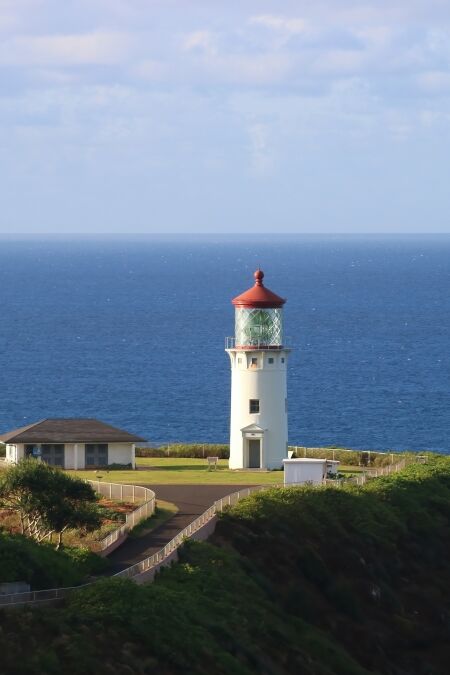At the northernmost tip of Kauai, Kīlauea Point National Wildlife Refuge is a haven for nature enthusiasts and birdwatchers, offering stunning coastal views and rich biodiversity. Established in 1985, this 199-acre refuge plays a vital role in protecting endangered native species like the Hawaiian goose (Nene) and serves as a prime spot for observing seabirds, marine life, and even seasonal humpback whales. This article explores everything you need to know about visiting Kīlauea Point, from its historical significance to the best wildlife viewing experiences.
Highlights
- Kilauea Point offers stunning panoramic views of the Pacific Ocean, making it an ideal spot for photography and enjoying the natural beauty of Kauai’s coastline.
- The refuge is home to a variety of seabirds, including the Laysan albatross, red-footed booby, and Hawaiian goose (nēnē), providing excellent opportunities for birdwatching throughout the year.
- Informative panels along the trails educate visitors about the local wildlife and conservation efforts, enhancing your understanding of this unique ecosystem.
- The refuge provides free binoculars for visitors to borrow, as well as telescopes for spotting marine life, making it easy to engage with the environment.
- Depending on the time of year, visitors may spot spinner dolphins year-round and humpback whales during their migration season in winter, adding to the refuge’s appeal.
- A brief three-minute walk from the entrance leads to the lighthouse, making it accessible for families and those looking for a quick yet rewarding outdoor experience.
History
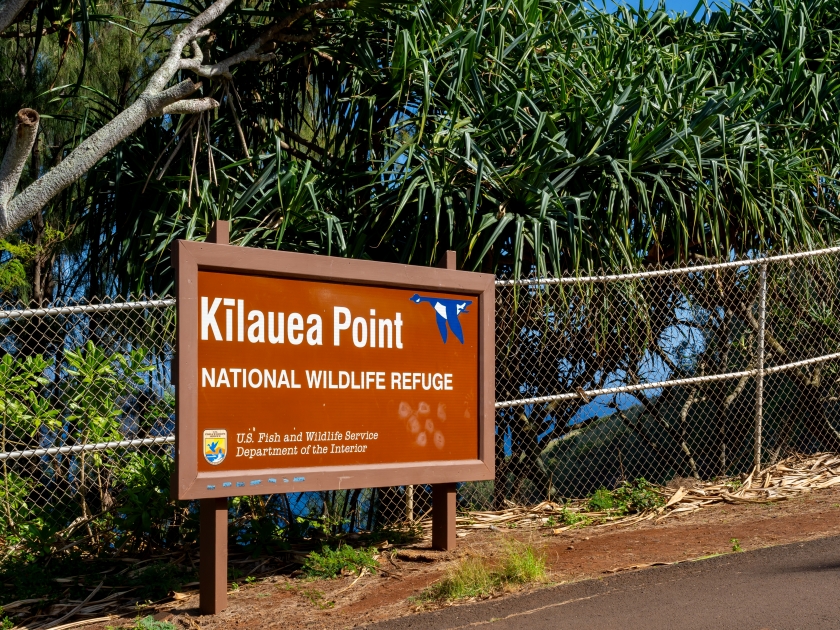
Founding of Kīlauea Point National Wildlife Refuge (1985)
Established in 1985, Kīlauea Point National Wildlife Refuge was created to safeguard migratory seabirds, endangered species like the Hawaiian Goose (nēnē) and Newell’s Shearwater (ʻaʻo), and their habitats. Spanning 199 acres, the refuge’s stunning 568-foot ocean bluff provides critical nesting grounds for seabirds such as the Laysan Albatross (mōlī) and Red-footed Booby (ʻā).
The Historic Kīlauea Point Lighthouse (1913)
The Daniel K. Inouye Kīlauea Point Lighthouse, built in 1913, served as a key navigational beacon for mariners and early aviators. Recognized for its unique lens—one of only seven of its kind in its original position—the lighthouse was added to the National Register of Historic Places in 1979, solidifying its importance in Hawaii’s maritime history.
Lighthouse Automation and Restoration Efforts (1976-2013)
In 1976, the automation of the lighthouse prompted a community-led restoration campaign, which raised nearly $1 million. These efforts culminated in the successful restoration of the lighthouse in time for its 100th anniversary in 2013, preserving its legacy for future generations.
Conservation Milestones: Nihokū Ecosystem Restoration Project (2012)
Launched in 2012, the Nihokū Ecosystem Restoration Project focuses on creating predator-free nesting sites for native seabirds. This initiative is a testament to the refuge’s ongoing commitment to protecting Hawaii’s unique wildlife and ecosystems.
Educational and Ecotourism Opportunities
Kīlauea Point serves as both a conservation hub and an educational resource, offering guided tours and programs that emphasize the importance of preserving Hawaii’s natural heritage. Visitors can immerse themselves in the refuge’s rich history and ecological significance while enjoying its breathtaking views.
Wildlife and Birdwatching
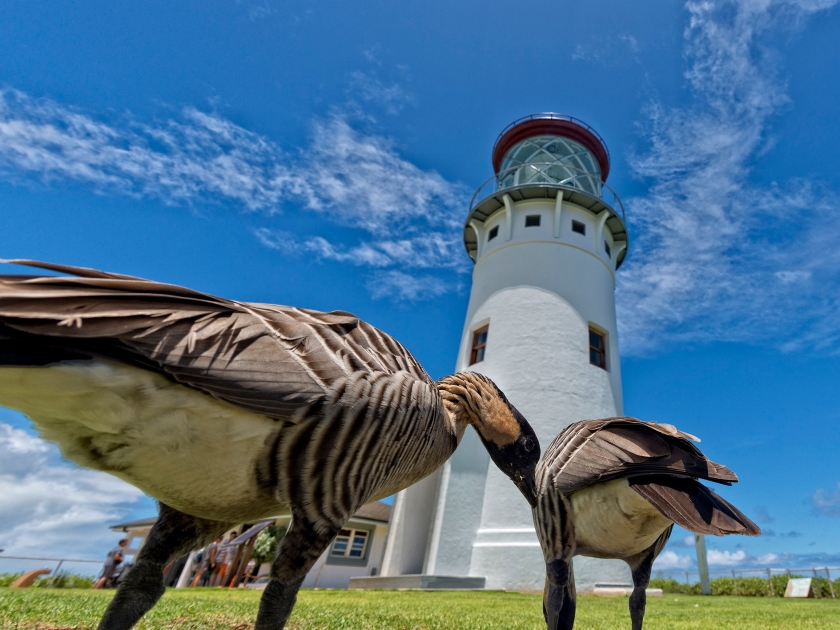
Kīlauea Point National Wildlife Refuge boasts a remarkable variety of seabirds, making it a paradise for birdwatching enthusiasts. Notable species include the Laysan Albatross (mōlī), recognized for its expansive wingspan and elegant flight, and the Red-footed Booby (ʻā), easily spotted nesting along the cliffs with its vibrant feet. The Great Frigatebird (‘iwa) impresses visitors with its sleek black feathers and incredible aerial maneuvers, while the Hawaiian Goose (nēnē), Hawaii’s state bird, is a frequent sight throughout the refuge. Beyond birds, the surrounding waters are often graced by spinner dolphins, Hawaiian monk seals, and green sea turtles. Thanks to predator-proof fencing, the refuge offers a secure habitat, enhancing its reputation as a top destination for wildlife observation.
Visiting the Refuge
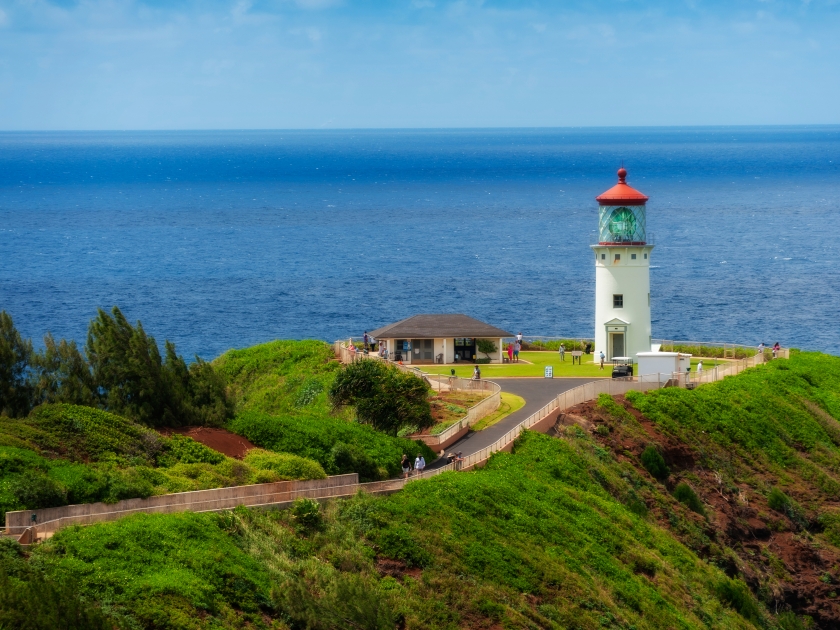
Hours of Operation
Kīlauea Point National Wildlife Refuge welcomes visitors from Wednesday to Saturday, between 10:00 AM and 4:00 PM. To manage visitor flow and ensure a safe environment for the wildlife, reservations are required for anyone aged 16 and older.
What to Expect
A visit to the refuge includes a leisurely three-minute walk from the entrance to the historic lighthouse, with interpretive panels along the way highlighting the area’s unique wildlife. Docents provide free binoculars, allowing guests to get an up-close view of the seabirds and other animals that call the refuge home.
Conservation Efforts
Kīlauea Point National Wildlife Refuge is a cornerstone of wildlife conservation, actively working to restore habitats for endangered species such as the Newell’s Shearwater (ʻaʻo) and to bolster seabird populations. These initiatives are integral to safeguarding Hawaii’s fragile ecosystems, focusing on combating habitat loss and the threat of invasive species.
Nearby Attractions and Activities
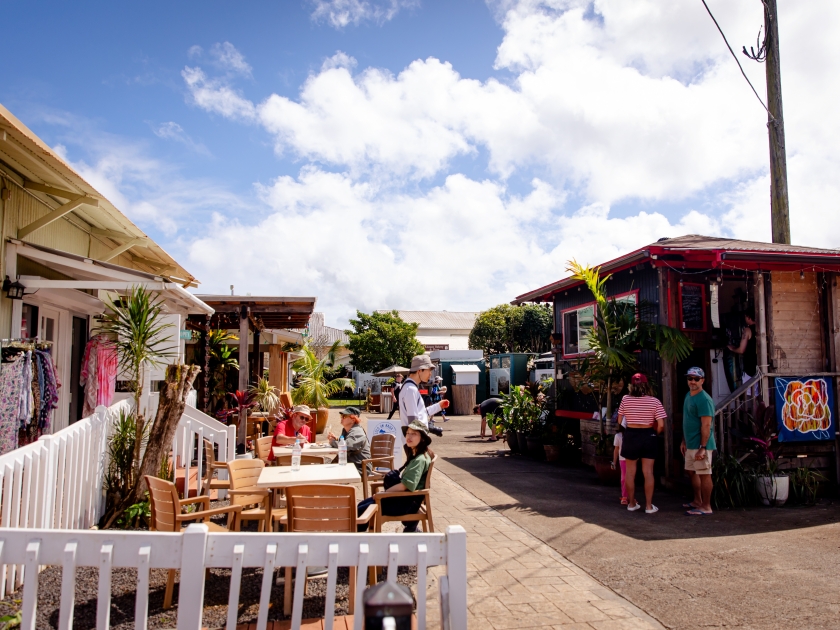
After exploring Kīlauea Point, take a trip to Kīlauea Town to enjoy its charming local shops, diverse restaurants, and cultural landmarks. For more outdoor adventures, head to nearby Anini Beach or Kalihiwai Beach, both offering excellent opportunities for snorkeling, swimming, and soaking in Kaua’i’s natural beauty.
Tips for Visiting
- Make a Reservation: Required for all visitors aged 16 and older.
- Arrive Early: Arriving at the start of operating hours ensures ample time to explore and enjoy the refuge.
- Bring Essentials: Sunscreen, a hat, and comfortable walking shoes are recommended.
- Use Free Binoculars: Available from docents for enhanced wildlife viewing.
- Follow the Rules: Stay on designated paths and respect wildlife to help protect the habitat.
- Check the Weather: Coastal weather can be unpredictable; bring a light jacket for windy conditions.
Best Times to Visit
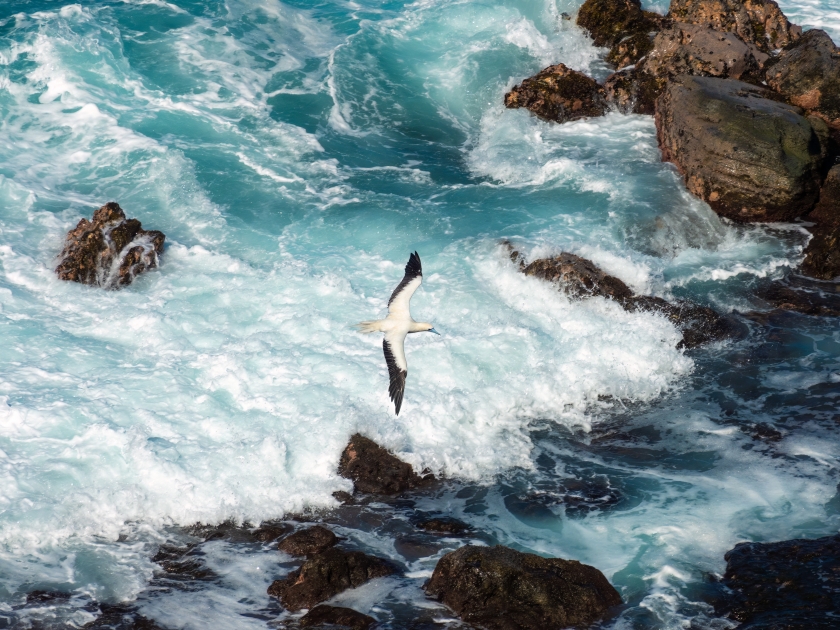
The best time to visit Kīlauea Point National Wildlife Refuge is during the cooler months from November to April when migratory seabirds and humpback whales are most active. Morning visits are ideal for calmer weather and optimal wildlife viewing, while afternoons offer stunning views as the light shifts over the cliffs and ocean.
Frequently Asked Questions (FAQs)
Currently, Kīlauea Point National Wildlife Refuge does not offer formal guided tours, but visitors can explore the area on their own and benefit from educational panels throughout the refuge.
Yes, Daniel K. Inouye Kīlauea Point Lighthouse is part of the refuge; however, access to the lighthouse itself is limited and requires reservations for visitors aged 16 and older.
The refuge is open Wednesday through Saturday from 10:00 AM to 4:00 PM, with the last entry at 3:30 PM. It is closed on most major federal holidays.
Yes, all visitors aged 16 and older must make a reservation in advance to visit Kīlauea Point National Wildlife Refuge.
Absolutely! Kīlauea Point is family-friendly and offers a great educational experience for children, with opportunities for wildlife viewing and learning about conservation efforts.
Yes, the refuge features a visitor center with educational displays and a nature store where you can find souvenirs related to wildlife conservation.
How to Get There
By Car
To reach Kilauea Point National Wildlife Refuge by car, begin your journey from Lihue, the main city on the island of Kauai. Head north on Kuhio Highway (Highway 56) traveling approximately 23 miles. As you approach Kilauea town, keep an eye out for signs indicating the turn-off for the refuge. Make a right turn onto Kolo Road, then take the first left onto Kilauea Road. Continue on this road until it culminates at the refuge entrance. The drive from Lihue typically takes around 45 minutes depending on traffic conditions.
By Bus
For those opting to travel by bus, the Kauai Bus service offers a convenient and eco-friendly option. From Lihue, board the Route 500 bus heading northbound. You’ll need to disembark at the Kilauea Neighborhood Center stop. From there, a short walk along Kilauea Road, approximately one mile, will lead you to the entrance of the refuge. Be sure to check the bus schedule in advance for any changes in service hours or frequency.
Wings, Waves, and Wonders
Kīlauea Point National Wildlife Refuge is more than just a scenic stop; it’s a sanctuary where nature thrives and conservation takes flight. From the awe-inspiring seabirds soaring above rugged cliffs to the serene waters teeming with marine life, this refuge offers an unforgettable experience for any nature lover. Don’t just read about its beauty—come and witness firsthand the remarkable efforts to protect Hawaii’s unique ecosystems.


